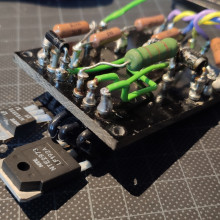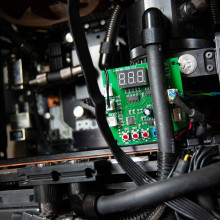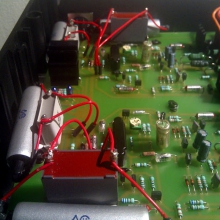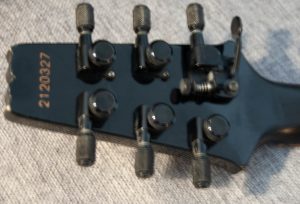Here you’ll find a collection of things that I do, make, say and think. A collection of projects I publshare on other sites online. Including; custom built and designed guitar or Hi-Fi amplifiers and effects, custom PC servers, and rescued, upcycled hardware. Simply a central place to collect what I’m doing with some of my a creative rest at any given time.
If you are in search for my professional information go to >JohannesJohansson.com<
For multiple ways to contact me this >linktree< makes it easy.
Categories
- DIY (24)
- DIY Audio (13)
- DIY Computation (7)
- DIY Misc (5)
- Uncategorized (1)
Random Posts
-

Splitter pedal: Two guitar amps at once
Splitting the output of your guitar/pedalboard to two separate Guitar Amps is one of the most powerful way in shaping your tone and ‘broaden’ the […]
-

Homelab: 4 Family & apartment friendly server cabinet
Finding ways to live with an interest in computers can be a challenge. That is having half a dozen computers running 24/7 is not something […]
-

Saving monitors: leaky capacitors
A common issue with electronics are when small insignificant components fail. Fixes then usually only depend on 1) Knowledge/problem solving and 2) 1-2 $/€/£ in […]
-

Restomod Car: 3 GTE Digital Dash start
Digital dash, yes you saw right there is a digital dash available (from an Opel GTE) for this 90’s car, here I will heavily modify […]
-

TrainWreck Rockette: 1 Redesigned
The trainwreck rocket is a highly coveted and copied guitar amp, however it, in part, is a copy itself. It is the core of a […]





Guitar rebuild: 1 onboard preamps & hardware
The “cardinal series” resembled the Gibson SG, but the mid and top-tier like this one did add a beautiful carved top, more like a Leș Paul. Having been well used with a nice playing patina this guitar was a good choice for customization, all gold hardware had to go thou, (saved for the future if someone wish to restore it down the line, changes are reversable).
So, step one; locking tuners, Drop D switch on the low E-string (this mod lets you have a guitar in standard tuning and with a flick of this lever drop to D, very useful). Replaced tuning keys to something nice, all small gold details were switched, like screws, studs, pickup rings, to black metal ones etc.. Changed the saddles to nice Graph-tech ones. Finally, all toggle-switches changed to black anodized and higher quality versions.
For this project I used an extra leftover pickup and attached it to two switchable preamps, one like increased output EMG-81 (analysis here), ‘ativator’, active pickup and one a design by “Bajaman” (as seen in this thread) that have a more more ‘rounded’ frequency response (a nice definite difference from the 81). For this I add shielded caps to the pickups like you see in EMG’s I shield the pickup-cavity well (more than previous shielding paint) and add a new backplate making a space for the battery. The wiring is such that the preamps turns on when you plug in a guitar cord. (the missing high e-string may.. be a reference to Max cavalera, that famously removes his two highest strings after once trying to solo infront of his band, accepting a rythm role can be fun, this guitar in particular is for heavy rythm and hard playing alone).
Components for the preamps include some very nice RN50 ‘milspec’ resistors for power and bypass duty, nice Panasonic or Silver mica capacitors, and PRP resistor that carry the direct signal. The ‘Baja’ preamp uses a standard layout while on the ‘ativator’ preamp I made my own, manging to really minimize it to a tiny layout. To both I added a mod, switch that bypasses one of two resistors at the input of one of the two coils. Flipping this switch makes for an unbalanced differential amplifier more like the original emg-81. See analysis at the links above, this option sacrifices some hum cancellation for increased frequency response.
For in depth information on emg81 and alternatives there are these sources. Ed Tavares of Handmades from Brazil with the Ativador design, a very very hot amplifier.
EMG 81, BAJA
On the front, one switch now activates the preamps (thus able to run the guitar on the regular passive pickup as well) the other switches between pickups.
All in all, this makes for a guitar able to push any high-gain amp into a nice tone suitable for heavier music. It does not play as well as my nicer guitar but for me is quite perfect for a real heavy rhythm tone. With some tone-shaping available, due to the difference in preamps, a good sound can be had, although many amplifiers for heavier music often needs additional tweaks, the most common of which is a overdrive pedal to cut some bass and boost mids. Second installment will fit this into the guitar as well using a ‘son of screamer’ effect on a push-push dpdt tone pot. With that the result should work very well for a good heavy tone without any pedal board.